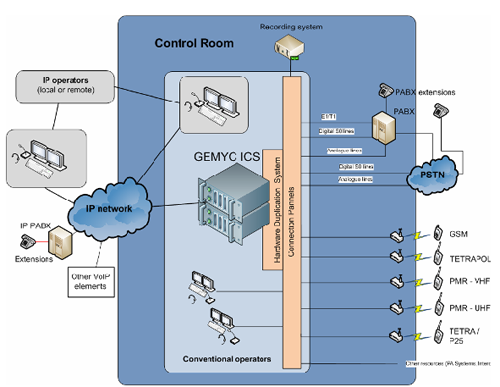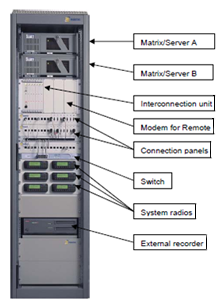The 26 November Mumbai terrorist attack, apart from being traumatic for the nation, brought about a dramatic change in the way India approached Homeland Security. The State Police modernization aside, the attack also highlighted problems with respect to coordination between various agencies responding to the attacks. During the course of the successful operations against the attackers, between 26 and 29 November 2008, at least five agencies were involved: the Mumbai Police, the Mumbai Fire Brigade, the Indian Army, the Indian Navy (MARCOS), and the NSG. During such critical operations, an Integrated Communications System plays a crucial role in close coordination among various agencies.
Reliable and protocol-agnostic communication is the key to effective coordination. Different arms of the armed forces use a combination of communications frequencies (VHF, UHF, HF), while state emergency response units, in India, use one or more of communications protocols such as GSM, CDMA, and Tetra, in addition to various radio frequencies. Seamlessly integrating various protocols is therefore a must, if timely and life-saving assistance is to be delivered to citizens, and is what an Integrated Communications System (ICS) achieves. This Technical Brief sheds some light on the components of an ICS and the desired features of such a system.
Integrated Communications System (ICS)
The Integrated Communications System (ICS) is a hardware device or a set of hardware that allows communications protocols/interfaces as diverse as conventional PMR (UHF, VHF, HF), TETRA, digital telephony, analogue telephony, GSM, CDMA, and VoIP to interact seamlessly. The ICS functions as an EPABX, except that it switches communication links of different protocols/interfaces instead of switching links of just one protocol/interface.
 |
| F1: ICS Arhitecture |
Depending on the solution, the following are the components of an Integrated Communications System:
Matrix/Switch Server:
This is typically a computing unit with the ability to be configured with communications line cards, and running the user-interface (UI). Depending on the hardware platform, the line cards will sit on a CNR slot or on a PCM MVIP bus. The chassis will be industrial-design and can take up to 20 line cards. Some solutions allow this component to be configured in a redundant mode, given its criticality to the operation of the Integrated Communications System. In case there is a redundant server, the ICS will provide for a Interconnection Unit to make signals available to both servers.
 |
| F2: Rackmounted ICS solution |
Connection Panel:
This component can either be an integrated sub-system of the Matrix/Switch server or an add-on module. The Connection Panel receives all the external signals to the system and routes them to the Matrix/Switch server. It is the termination box for all physical lines and radio links.
Application/UI:
The application runs on the server and allows a user to patch calls, set up conference calls, and carry out configuration tasks. The user-interface can be graphical or character. In addition, some solutions provide a touch-screen interface for easier patching and conferencing.
External Conversation Recorder:
This is an optional component and allows all voice communications passing through the ICS to be recorded for archiving purpose.
Desired Features of an ICS
There are various ICS solutions in the market, offering differing levels of sophistication in the implementation of the switching functionality, in the number of protocols/interfaces supported, and in the call functions supported. A few features users need to look for in an ICS, over and above standard call features such as group call handling, conferencing, call multiplexing, are:
- Scalability:
The Integrated Communications System should be able to scale beyond a handful of audio lines. The system should provide headroom for growth, since the best way to manage a communications matrix is to have all communications lines terminating in one system. - Ease-of-Use:
Many solutions work on button-inputs and character displays, because they come from a radio background. Given the ease-of-use possible on digital systems these days, the ICS solution should support a GUI and, optionally, more user-friendly features such as touch-screens, hand and foot operation, etc. - Fault-Tolerance:
Given the criticality of the ICS to the responding units, it is preferable that the ICS offers some level of fault-tolerance. - Archiving:
The ICS should allow the option of recording the voice communications, both for forensic and archiving purposes.
Conclusion
An Integrated Communications System, ICS can be the difference between a coordinated and effective response to a crisis, and a confused and delayed to a crisis. Homeland Security response teams worldwide are investing in such systems to improve their operational efficiency. Mistral offers the Integrated Communications System for users interested in a fully-featured, robust, and user-friendly solution.



